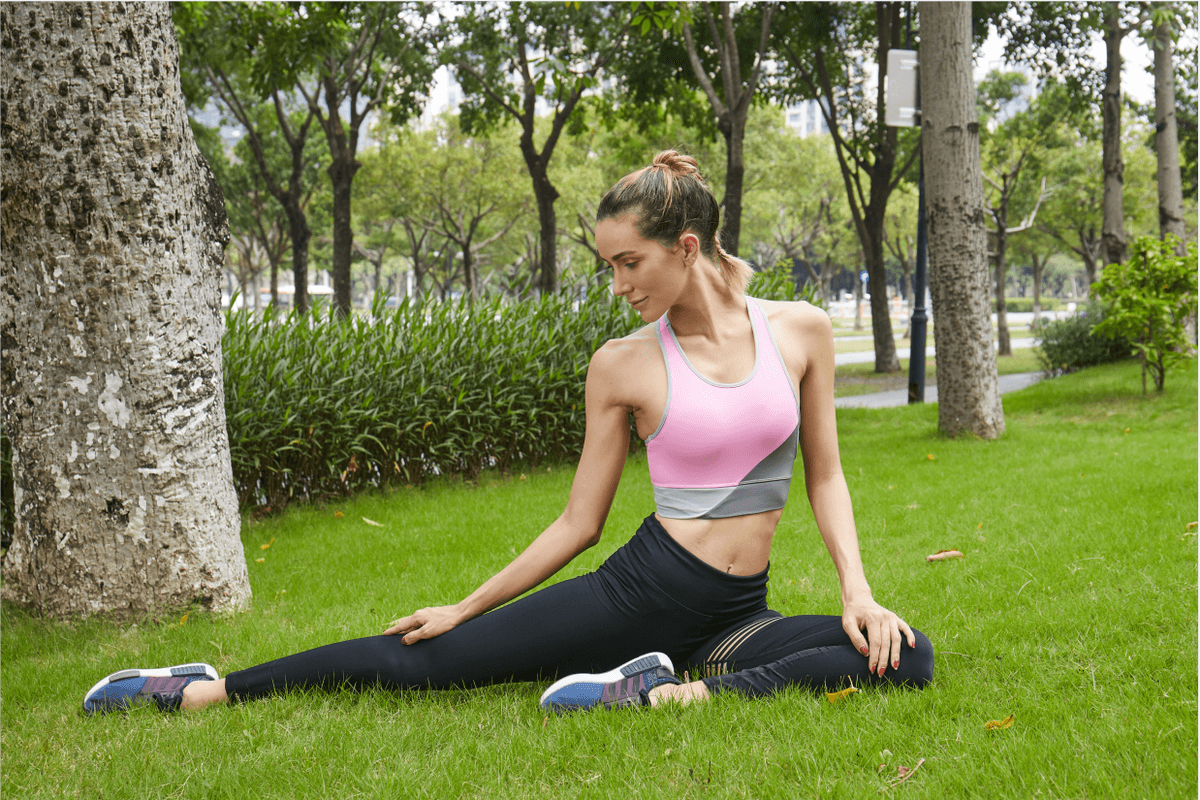How To Meditate: A Beginner’s Guide
Meditation or mindfulness is a simple technique that anybody can use to reduce anxiety, improve relaxation and concentration, and boost joy. Practicing meditation is simple, and the benefits may come quickly.
To master how to meditate, you do not have to be a super-enlightened expert. This mental practice, which includes several techniques for building mindful, unconditional positive regard self-awareness, is far more practical than you would imagine. Furthermore, meditation may benefit your health.
Here are some fundamental guidelines to help you follow a path to serenity, compassion, and joy. Breathe deeply and prepare to unwind.
What Is Meditation? (Understanding Meditation)
Meditation is a series of methods designed to promote greater awareness and focused concentration. Meditation is another consciousness-altering method that has several therapeutic advantages.
Meditation is a sort of supplementary treatment for the mind and body. Meditation may induce a profound level of calmness and a calm mind. Throughout meditation, you center your thoughts and clear your mind of the confused ideas that may overwhelm your head and create tension.
Benefits of Meditation
Many people who practice meditation have demonstrated the advantages of regular meditation.
Reduced stress, greater attention, improved circulation, and helping with anxiety and depression symptoms are just a few examples.
While there are several styles of meditation, they may all provide the same set of established rewards for health. Here are some of the benefits of meditation:
- 01: Building Skills to Manage Your Stress
Meditation may induce a profound level of calmness and a relaxed mind. During meditation, you concentrate your thoughts and clear your mind of unwanted thoughts that may cause tension. This procedure has the potential to improve both physical and mental health. - 02: Increasing Self-Awareness
Meditation practice improves your capacity to view yourself from a more positive perspective. Mindful consciousness is related to the lower activity of brain areas involved in ruminating. - 03: Focusing On the Present
When we practice mindfulness or concentrate on what is at hand, we are not dismissing or denying ideas of the past or future when we practice mindfulness or meditation; we are deliberately deciding not to concentrate on them. It is okay to recognize and classify our past and future ideas, define them, and are conscious of their significance. - 04: Increasing Imagination and Creativity
For starters, mindfulness activates diverse thinking. Essentially, meditation allows your mind to be receptive to new thoughts. Secondly, mindfulness meditation enhances focus and makes it a lot easier to recognize the uniqueness and value of new ideas. - 05: Increasing Patience and Tolerance (Which Can Generate Kindness)
The fact is that we cannot cultivate patience. We may, however, choose to get over our emotions of impatience. We may gradually learn this via meditation and discover the best approach to letting go of everything.

- 06: Controls Anxiety
Meditation may induce a profound level of tranquility and a calm mind. During a meditation session, you deliberately engage your mind with positive thoughts. This therapy can improve both mental and physical health. - 07: It Promotes Emotional Health
Meditation may achieve a deeper level of calmness and a peaceful mind. Practicing meditation will give you a balanced life with a lot of sobriety. With mindfulness practice, you will have time to reflect on crucial issues and not make rushed decisions; this will help you relate well with others. - 08: Enhances Self-Awareness
Meditation practice gives you a different view of yourself in a healthier, more conscious manner. When your mind is calm, you will be much more self-aware of your being and self-respect; this will improve your self-esteem and, as a result, your appreciation of humanity and life in general. - 09: Lengthens Attention Span
Relatively, meditation practices improve concentration span. A short meditation helps the brain stay attentive by enhancing resilience and focus, much as a workout with weight lifting may help grow and condition muscular power. - 10: May Reduce Age-Related Memory Loss
Many aged people who practice meditation have experienced quick improvement after only a few weeks. Meditation enhances blood circulation in the brain and boosts memory capacity.

- 11: Improves Sleep
It is simpler to silence the distracting ideas that make your brain spin if you calm your mind and body. Meditation lowers the stress response. Meditation raises natural melatonin production, which aids in a night of more comfortable sleep. - 13: Can Decrease Blood Pressure
Daily meditation can minimize the overreliance on routine medication and lower blood pressure. Relaxation techniques develop chemicals that dilate blood flow, lowering blood pressure.

Types of meditation
Here are the types of meditation.
01: Mindfulness Meditation
Mindfulness meditation concentrates on being fully conscious of what you are experiencing and thinking in the present moment, without deep reflection or evaluation. Mindfulness incorporates breathing techniques, mental imagery, and other activities that assist in calming the mind and body and relieving anxiety.
02: Spiritual Contemplation
Spiritual meditation is a life-changing process that leads you to the core of your being. You can liberate yourself from your thought perspective of who you are and get into another life realization from a different life perspective. You will feel joy and calm as a result of the procedure.
03: Focused Meditation
Focused meditation, also known as cognitive processing meditation, is an approach for people who want to attempt meditation to manage anxiety. Instead of establishing a clean mind without a precise central focus, this meditation approach lets you shift your focus on an item, sensation, or experience.
04: Movement Meditation
Movement meditation methods are workouts that revitalize physical and mental health via focused inhalation or motion.
Movement meditation allows us to experience bodily sensations, gravitational and momentum, as actual realities.
05: Mantra Meditation
Mantra meditation is a technique that uses the quiet recitation of a string of words as the object of attention to help cultivate consciousness. It helps to calm down cognitive activities and cognition. However, mantra meditation does not silence your mind.

06: Transcendental Meditation (TM)
Transcendental meditation is quietly chanting a catchphrase for over 15 minutes every day, typically while relaxing with your eyes shut. It is among the most popular relaxation techniques.
07: Progressive Relaxation
Progressive relaxation (PR) is a way to unwind. It entails flexing and then releasing your muscles one at a time. This release of bodily strain may alleviate anxiety and stress. PR has been demonstrated in studies to provide a variety of advantages, such as pain alleviation and improved sleep.
08: Loving-Kindness Meditation
Love-kindness Meditation is an excellent way to improve our proclivity toward compassion. It entails silently reciting a sequence of phrases to express friendliness, generosity, and gratitude to people.
09: Visualization Meditation
Visualization meditation is a relaxation technique in which you focus on visuals to build consciousness. People who exercise visualization meditation may benefit from the mental health benefits, strain relief, and other rewards associated with mindfulness activities.
10: Chanting Meditation
Sound is essential in chanting meditation to induce spiritual awakenings of the mind. Sound can be therapeutic, comforting, or exciting. Chants of spiritual phrases, slogans, and prayers are examples of meditations. It necessitates calmness and a readiness to look within.
11: Chanting Meditation
Guided meditation is administered by a master, either in person or via video and audio recording. When first beginning, it is best to have a master guide you through the fundamentals of your relaxation techniques.

How to Meditate ?
Here are some of the meditation techniques.
01: Take a Seat (In a Quiet Setting, In a Comfortable Position)
Sitting is the best way to start meditating. If you lie on the floor, especially at first, you risk losing consciousness and falling asleep. Sitting in an attentive posture gives you energy and focus while relieving your mind of the burden of information processing.
02: Get Comfortable and Prepare To Sit Still For A Few Minutes
Sit comfortably and imagine that you are in the middle of a circle of people who have touched you with their support and love. Maybe you have met them or heard of them; they may have lived historically or supernaturally. That completes the circle. Feel yourself as the beneficiary of their attention and affection as you envision yourself in the middle of it.
08: Loving-Kindness Meditation
Love-kindness Meditation is an excellent way to improve our proclivity toward compassion. It entails silently reciting a sequence of phrases to express friendliness, generosity, and gratitude to people.
03: Set a Time Limit
Even though it is not a straightforward process, the general opinion appears to be that to get the advantages of meditation, you should practice the techniques for 5 to 10 minutes every day. However, because everyone reacts differently, it is crucial to try lengthier meditation times if you feel comfortable sitting in one place for long periods.
04: Notice Your Body (Focused Attention)
Body scanning is the most efficient way to initiate a relaxation technique. The goal is to connect with your body, engage with your inner body, and observe whatever feelings you are experiencing without judging.
05: Feel Your Breath (Relaxed Breathing.) Follow Your Breath for Two Minutes
Relaxed breathing helps align the mind and the body, making you more self-aware of the present moment. When we feel our breath, we experience the state of being alive. Even when you have a bad day, feeling your breath is fantastic.

06: Breathe Deeply
Deep breathing lowers your heart rate, allowing your body to absorb more oxygen and eventually instructs the mind to relax. It also helps to regulate your hormones by reducing cortical levels and enhancing endorphins. Deep breathing 3 to 5 times can make you enjoy your sleep.
07: Scan Your Body
Feel your feet firmly on the ground. It does not matter if you are wearing your shoes or not. Then trace your entire body, progressively and gently. Do this upwards from the center of your head. Scanning the body will make you feel alive and put you in a good mood for this pro.
08: Repeat a Mantra
While relaxing, reciting a mantra can help you discover your breathing pattern. It may take a while to become comfortable with contemplative breathing techniques. Aligning your breathing to your chant can make things simpler and calm your mind.
09: Engage In Prayer
One of the goals of meditation and prayer is to re-establish our foothold so that we can walk out of the home and take a proactive approach: we realign, re-center, rejuvenate, and obtain the energy to take some action that will result in genuine change. Prayer, or short, prayer meditation is the fuel that ignites the flame of action.
10: Focus On Your Love and Gratitude
Focusing on your love and gratitude improves your sense of well-being, with fewer forms of mental illness, better sleep, and increased trust. Most of the time, the benefits are immediate, indicating that even a single session of grateful meditation can improve your life.

FAQ about Mindfulness Meditation
1.How can I find the time to meditate in my busy schedule?
You can plan and arrange to fix time in your busy schedule for relaxation. Morning meditation is similar to cleaning your face. In the intervals between your everyday tasks, take a break and use your spare time to connect with your "inner being" and intentionally absorb your environment.
2.Can I meditate in a chair or lie down instead of cross-legged on the floor?
The first obstacle for most new mediators is mastering how and where to rest while meditating. First, sit in a comfortable, attentive position. You can sit with your legs touching the floor or on a pillow with your crossed legs on the floor. Any seating posture is okay. What matters is your comfort.
3.What should I do about the restlessness or discomfort I experience while meditating?
As you breathe in and out, pay attention to your body and observe your reactions, emotions, and thoughts. Exhale to get over whatever is not vital to you at the time. You can think about other things after the meditation, but avoid unnecessary interruptions.
4.How do I know if I am meditating the right way?
The first and most basic way to tell if you are on the right track is to examine your own body. If you are uncomfortable in your seat or fussing with things in your grasp, you should pause a second to settle those items. However, some people can remain stationary and avoid distraction.

5.Do I have to give up my religious beliefs to meditate?
Irrespective of your religious convictions, mediation is not a religion but a spiritually inclined activity. Throughout the years, adherents of different faiths have developed and defined meditation.
6.What should I do if my loved ones do not support my meditation practice?
If your family members are overtly hostile, you might have to meditate with a pre-existing group away from home. However, if they are just reluctant or tend to bother you at inconvenient times or seek your time when you want to have ample time, you should speak with them and emphasize your desire to meditate. You never know if your family may one day end up joining you and trying meditation for themselves.
7.Can meditation improve my health?
Meditation is a body-and-mind training technique with a rich history of restoring intellectual equilibrium, managing disease, and general health improvement.
Conclusion
While meditation is not a cure for all ailments, it may give you some handy breathing room in your existence. That is everything we need to make informed decisions for humanity in general. The most crucial resources you can bring to your mindfulness meditation are endurance, some self-kindness, and a comfortable space to sit while meditating.
When you meditate, you bring about positive and meaningful changes in your life. Please note that you do not need to acquire additional equipment or a costly subscription.





